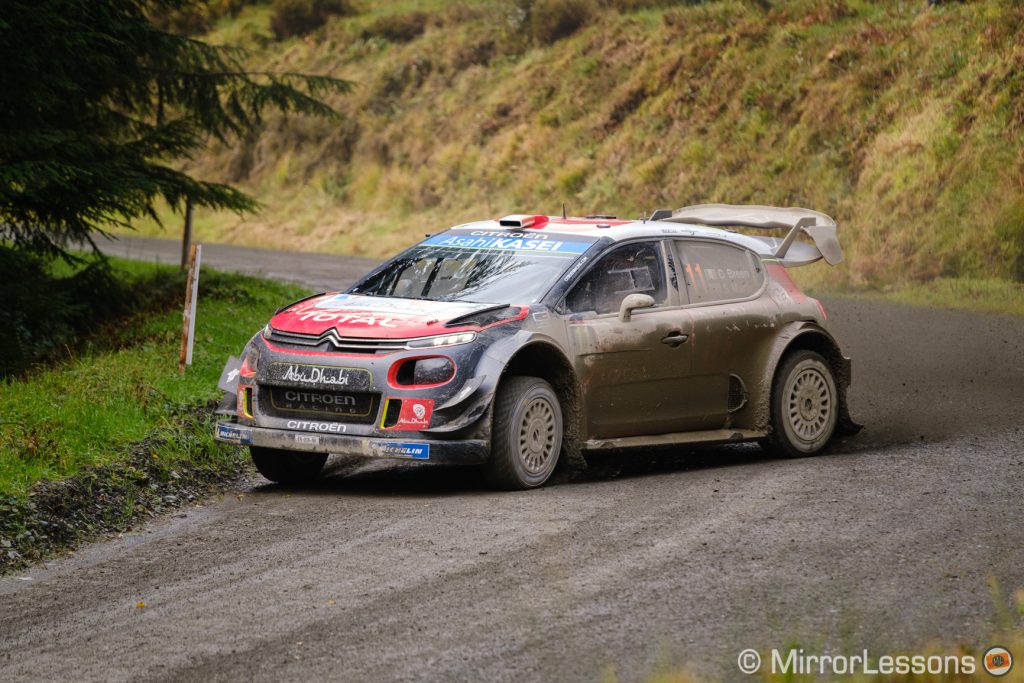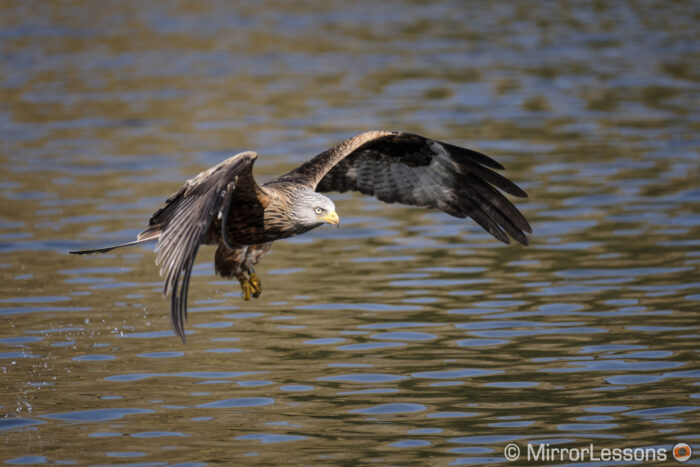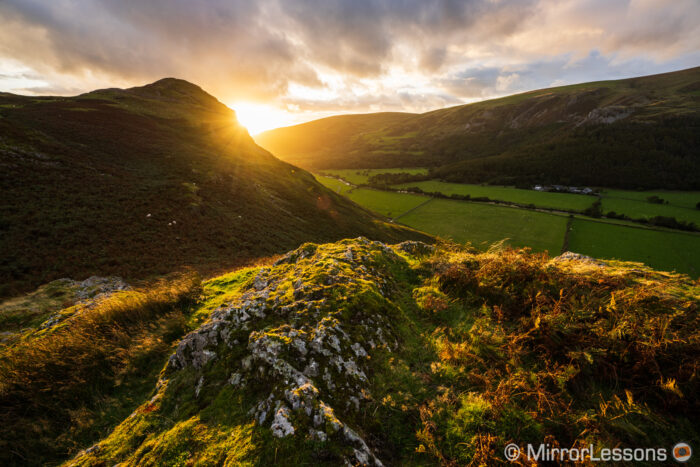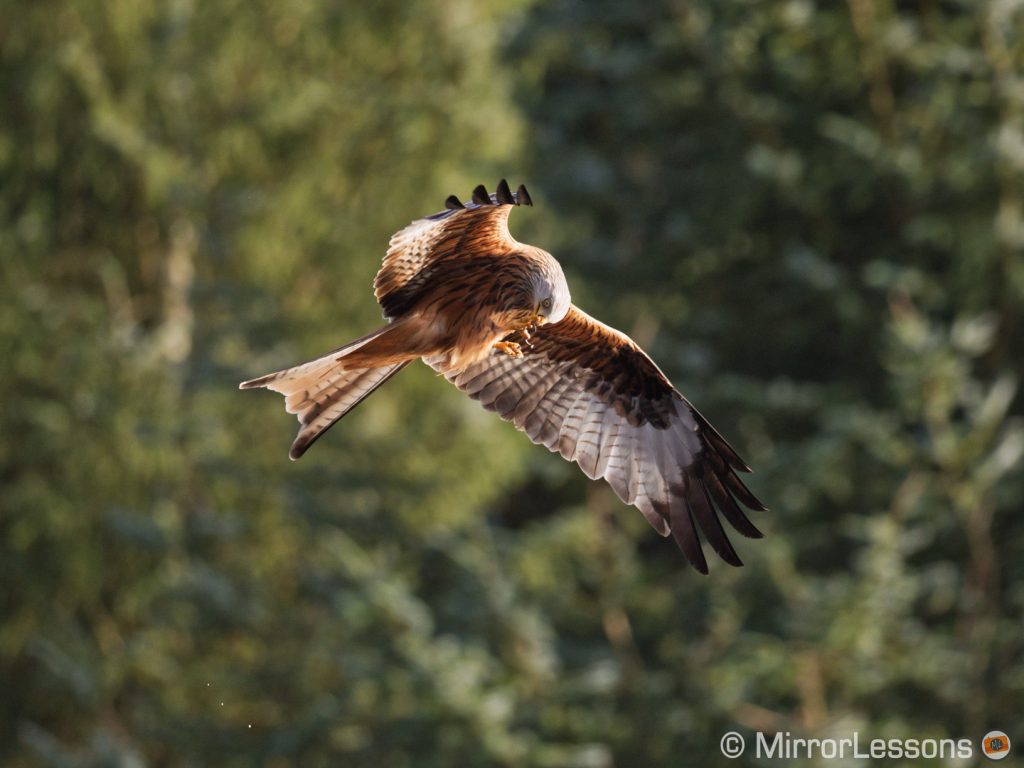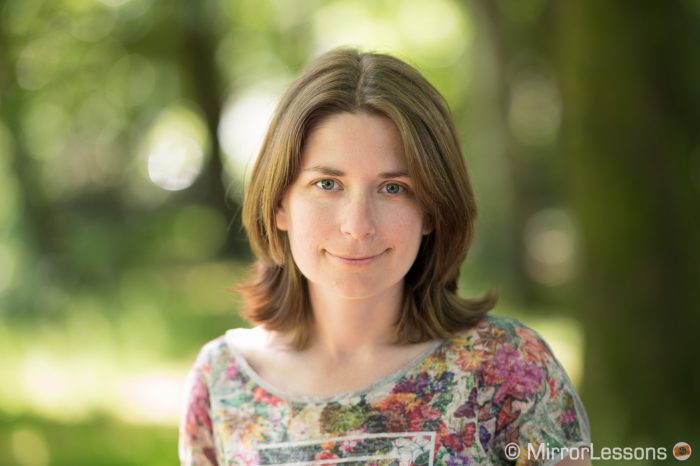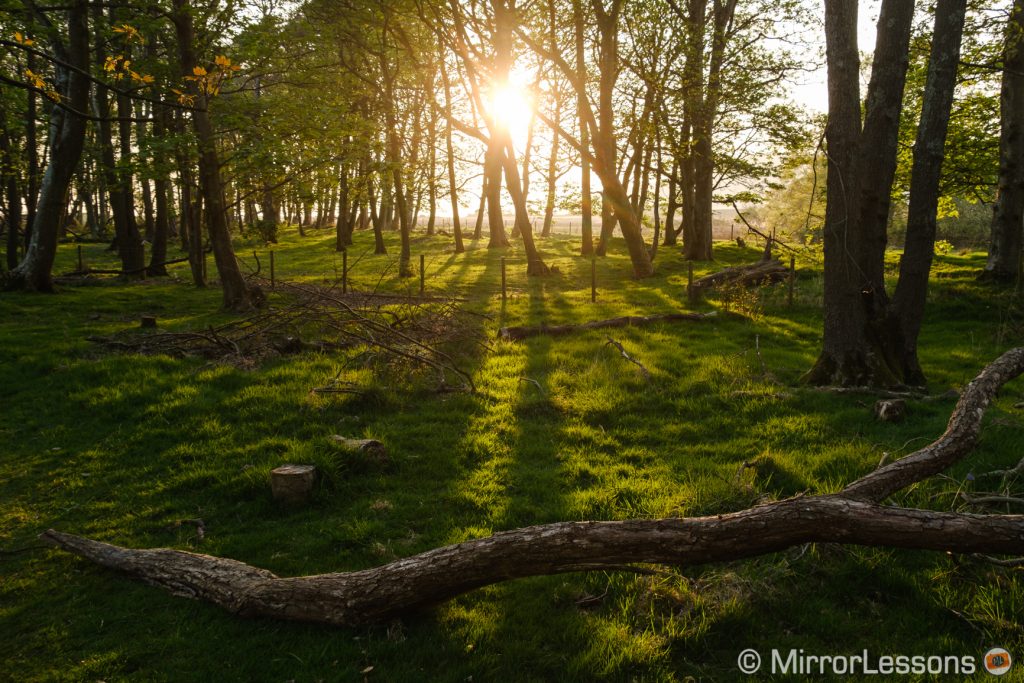Updated on: July 6th, 2020
Mirrorless cameras have become a force to be reckoned with over the past five years thanks to various improvements and advancements in technology and customer feedback. Today they play a bigger role than ever before on the digital imaging market. In fact, every important camera manufacturer has at least one mirrorless mount in its catalogue at the time of writing.
However this also means that customers have much more choice, and with such a large selection of cameras models to choose between, you may have a tough time settling on the right one. This is especially true if you are looking for your first mirrorless camera – or your first ever camera.
This “best of” article is based on all the experience we’ve amassed over the years, not only by testing these products individually but also comparing them side by side. We took into account specifications, handling, quality, performance, budget and other important topics in order to make this list as complete and accurate as possible.
A few notes about this article:
- We will updated it when we think that a newly tested camera deserves a spot on the list
- At the end of each chapter we’ve added information about models we excluded for one reason or another
If you’re looking to buy your first camera and don’t know where to start, we also suggest reading our simple Choosing a Mirrorless Camera guide too.
Ethics statement: All opinions expressed in this article are our own and based on our real world experience with each camera. We were not asked to write anything about these products, nor were we provided any compensation of any kind. Within the article, there are affiliate links. If you decide to buy something after clicking the link, we will receive a small commission. To know more about our ethics, you can visit our full disclosure page. Thank you!
Our best mirrorless cameras guide is divided into two parts:
- You are on part I: Top 3, professionals and advanced users, enthusiasts and amateurs
- Part II: video, on a budget, outsiders, fixed-lens cameras
Table of Contents – Part I
— Article updates
1. Preface: brands and mirrorless systems
2. Top 3 Mirrorless Cameras
3. Best Mirrorless Cameras for the Money
4. Best Mirrorless Cameras for Professionals and Advanced Photographers
5. Best Mirrorless Cameras for Amateurs and Enthusiasts
Article updates
- July 2020: info about the Olympus divestiture for the relevant cameras mentioned in this article
- November 2019: replaced Sony A7R III with A7R IV, added E-M5 III, created a new Best Camera for the Money section, general edits
- July 2019: Nikon Z6 added in the professional/advanced list, general edits
- May 2019: replaced a6300 with a6400, added feedback about the EOS RP
- March 2019: added E-M1X and initial thoughts about Lumix S1/S1R, replaced X-T20 with X-T30, added info about Canon EOS RP/Sony a6400
- October 2018: X-T3 replaces X-T2 in our top 3 list, X-T2 is moved to amateur/enthusiast list
Preface: brands and mirrorless systems
Before taking a deeper look at the numerous cameras listed in this article, it is useful to highlight the main characteristics of each active brand on the mirrorless market, especially if you’re not yet familiar with this segment.
Canon EOS M system
Canon hasn’t put a lot of effort into producing a competitive mirrorless camera in the APS-C segment. As of now there is a decent selection of models but a limited selection of native lenses (thankfully Sigma is releasing an EOS M version of its 1.4 DN primes). They’re worth considering if you just want a compact camera – perhaps something more portable to use alongside your Canon DSLR – and don’t care about building a complete system.
Canon EOS RF system
Canon launched its new full-frame mirrorless system in August 2018. They decided not to use the same mount found on the APS-C M series, but rather go for a larger diameter so as to develop fast lenses such as the 50mm f1.2 and the 28-70mm f2. It’s the beginning of a new era for the brand, and while the first products are not meant to replace any of their current DSLRs, it is clear that they will focus more seriously on mirrorless technology from now on.
Fujifilm GF and X-mount system
Fujifilm places a lot of importance on old-style design, manual controls, distinctive picture profiles and constant firmware updates. Autofocus and image quality are at a high standard but not everyone likes the look of the X-Trans RAW files. The lens selection is excellent but third-party brands are showing little interest. The launch of the GFX system has made mirrorless a competitive option on the medium format market.
Hasselblad X1D system
The first modern mirrorless medium format camera was announced in 2016 by the legendary Swedish company. The X1D-50s surprised everyone with its compactness. Since then Hasselblad has released several firmware update, has expanding the lens range and introduced the mark II version.
Leica M, SL and TL systems
Here we have another company that needs no introduction. With two full frame (the legendary M and the modern SL) and one APS-C system, Leica offers a vast range of mirrorless products and their lenses are among the best you can find. The build quality and craftsmanship will please the brand’s aficionados, but the performance doesn’t quite reach the level of other mirrorless products. They are much more expensive in comparison to other brands.
Nikon Z system
The Z system was announced in August 2018 and is the start of a new generation of cameras and lenses for the brand. Nikon more than any other company has insisted on the large mount and short flange distance as being an opportunity to produce high quality lenses (the F-mount DSLR version is quite a lot smaller by comparison). Two cameras, the Z6 and Z7, were announced with an identical design but different sensors (24MP and 47MP respectively), as well as an interesting roadmap that promises more than 12 lenses by 2020.
Olympus and Panasonic Micro Four Thirds system
Olympus and Panasonic pioneered the modern mirrorless camera as we know it. They are the most generous when it comes to advanced features and technology and Olympus’ 5-axis stabilisation still being unmatched by its rivals. Panasonic is the reference when it comes to professional video, though they’ve made some excellent improvements to their still photography features as well. The smaller sensor allows the two brands to design compact lenses and they also offer the widest selection of glass in the mirrorless segment.
Panasonic L-mount system
The alliance between Leica, Sigma and Panasonic led to the birth of a surprising alliance at the end of 2018. The mount is licensed by Leica (the same one used for the SL cameras) and Panasonic unveiled its first two mirrorless full-frame models at the beginning of 2019. With the existing lenses available from Leica, Sigma rapidly converting its existing products and Panasonic promising ten lenses by the end of 2020, the L system should grow rapidly, making the full-frame market even more competitive.
Sigma SD Quattro and L-mount system
The Quattro series is a different kind of product, with both APS-C and APS-H models. They’re capable of outstanding image quality thanks to the Foveon sensor, but are also somewhat limited in their versatility. The cameras aren’t all that expensive, and you have the entire Sigma lens catalogue at your disposal. It won’t be your main system of choice but it’s worth checking out nonetheless because the sensor is rather unique. Thanks to the L-mount alliance, the brand has unveiled its first full frame camera, the FP and plans to release a Foveon version next year.
Sony E-mount system
Sony offers full frame and APS-C models. It produces the best image sensors on the market and excels in autofocus technology and 4K video but the build quality and ergonomics still aren’t perfect. There are lots of lenses to choose between: many tend to be expensive but third-party brands are investing in the system which is a positive sign. The APS-C catalogue is less complete than the full-frame catalogue however.
The Top 3 Best Mirrorless Cameras of 2019
“No camera is perfect” is an overused statement but nonetheless true, and what defines the perfect camera differs from person to person. So to write this first chapter, I tried to answer a simple question: if I didn’t write camera reviews for a living, which one would I buy?
Sony A7 III
35mm – 24MP BSI – ISO 100-204800 – 4K up to 30p – 120fps in Full HD – 693 phase detection AF points – 10fps – 5 axis stabilisation – Dust and moisture resistant – Touch screen – Dual SD slot
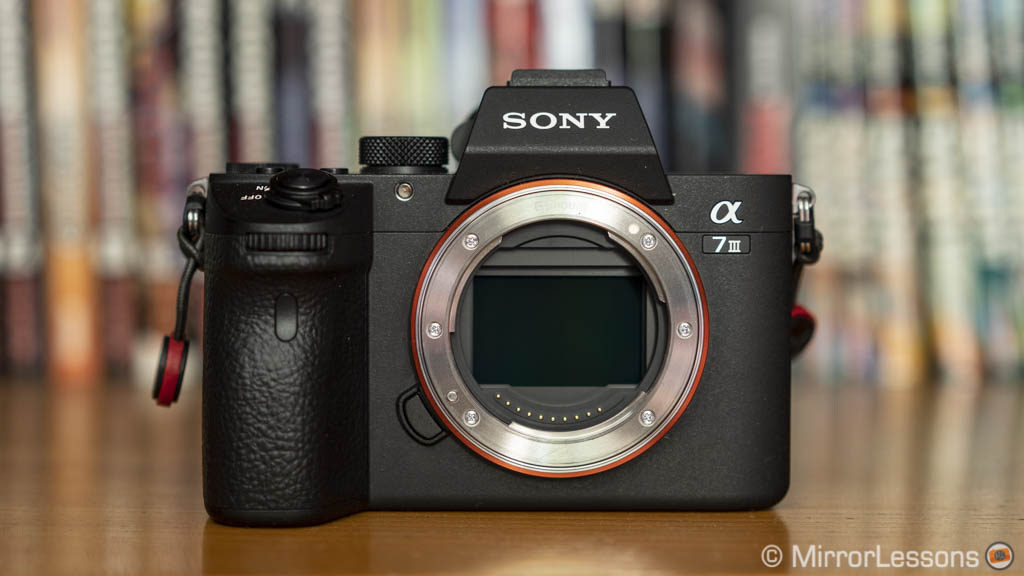
I’ll quote one of my colleagues who recently said: “The A7 III is the first Sony camera I would seriously consider buying.” I tend to agree with him.
I’ve owned many E-mount products for review purposes, but none of them impressed me to the point that I really wanted one for myself, if not for the pleasure of using such gems as the Sonnar FE 55mm f/1.8 or the Zeiss Loxia 21mm f/2.8. The quality and performance were there, but the confusing interface always put me off.
The current design philosophy still has room for improvement to be sure, but I can’t ignore the hard work Sony has put into improving its line-up – and the A7 III culmination of this effort.
The camera is well-priced for a full frame camera and doesn’t compromise when it comes to quality and performance. The sensor delivers great dynamic range and stunning results at high ISOs for stills and video, so much that I think it is a better deal for filmmakers than the A7S II. The autofocus is really close to the flagship A9, which is the best we’ve tested in the mirrorless segment. Sony is becoming more active with firmware updates, and the A7 III recently got EyeAF for animals which works as well as with humans.
Add to this touch capabilities, an AF joystick, dual SD card slots, extensive customisation and the best battery life in its class, and you realise why there is very little to complaint about.
The only negatives I can list are the menu system (which is still a bit confusing), the 5-axis stabilisation (which hasn’t really improved in the last three years), the lack of extra built-in features, and the small grip that makes the camera less comfortable with large lenses.
But for the first time with an E-mount product, I feel that the satisfaction you get with the camera’s performance outweighs the downsides. And that’s what matters really.
Why the A7 III is one of our top 3 recommended cameras:
- it ticks all the right boxes
- great image and video quality
- stunning autofocus performance in every situation
- lots of customisation
- superb battery life
- competitive price for what it offers
To consider:
- image stabilisation is decent but not the greatest
- an optional grip will improve comfort
- extra accessories are needed to add features such as time-lapse
- as of now, more interesting than the A7S II for video thanks to the improved 4K quality and battery life
Check price of the Sony A7 III on:
Amazon | Amazon UK | B&H Photo | eBay
Used Sony gear on MPB US | MPB UK
Panasonic GH5
Micro Four Thirds – 20MP – ISO 200-25600 – 4K/6K video with 10-bit 4:2:2 – 180fps in Full HD – DfD autofocus – 11fps – 5-axis stabilisation and Dual IS – Weather sealing – Touch screen – Dual SD slot
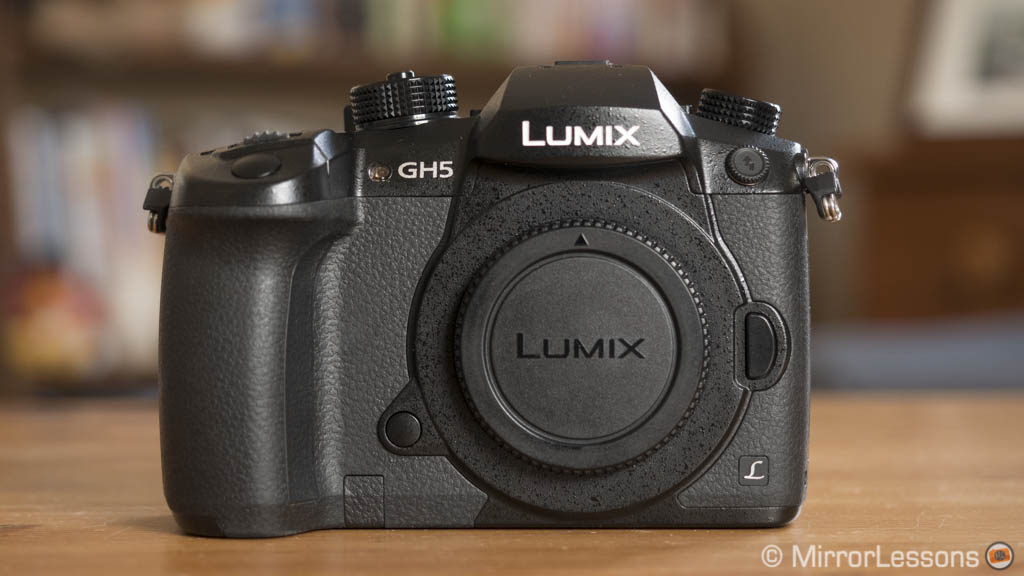
The sensor size can be a less important factor if the camera excels in all other areas. And there’s no better example of this than the Lumix GH5.
Ergonomically speaking, it is one of the most comfortable mirrorless cameras to use thanks to its perfectly-shaped body and well-placed buttons and dials. The menu system is the best in its class.
The camera’s video capabilities are second to none and the only model that can be considered a true competitor is its sibling GH5s. You find 4K recording up to 60p or 30p with internal 4:2:2 10-bit and it can shoot 6K anamorphic and Full HD up to 180fps. There are lots of profiles and settings designed for video, and it can record on the two SD cards simultaneously without any duration limitation. It’s a shame that you have to pay extra for the V-Log L profile though.
More GH5 video samples on our Youtube channel (4K 50p – 1080p at 180fps)
The photography side is no less complete. The 20MP sensor delivers excellent performance and the DfD autofocus system is a significant update over the previous generation, so much that the only subject I struggled with was birds in flight. There is 5-axis stabilisation and Dual IS which offer some of the best performance in this category.
Add to this the 6K/4K Photo mode, tons of extra features, and generous firmware updates, and you get the most complete camera ever, all markets combined. I don’t remember having so much fun with any other product in recent years.
Why the Panasonic GH5 is one of our top 3 recommended cameras:
- the most advanced “all-in-one” camera for stills and video
- excellent video quality with advanced settings no one else has offered yet
- overwhelming list of extra features
- very comfortable and practical to use
- relevant updates via firmware
To consider:
- the AF can struggle with challenging subjects such as birds in flight
- definitely not a small camera
- V-Log profile must be purchased separately
- if you are only interested in the video side for professional work, the GH5S gives you superior ISO performance thanks to Dual Native ISO (more on the GH5s in part II) but loses internal stabilisation
Check price of the Panasonic GH5 on:
Amazon | Amazon UK | eBay | B&H Photo
Used Panasonic gear on MPB US | MPB UK
Fujifilm X-T3
APS-C – 26MP X-Trans IV – ISO 160-51200 – 10 bit 4K video – Hybrid AF – 30fps – Weather sealing – Dual SD slot
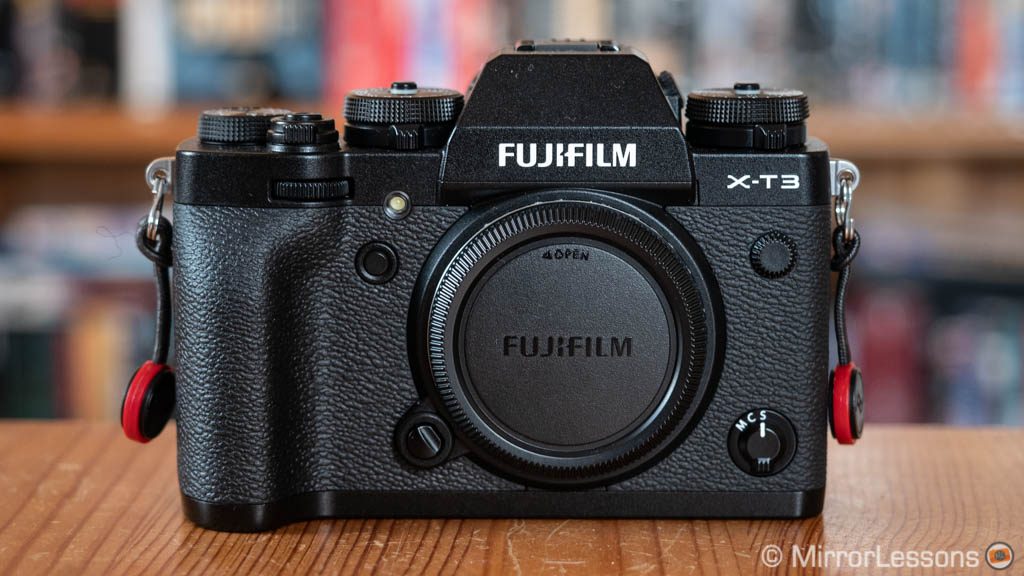
We previously ranked the Fujifilm X-T2 as one of our top three mirrorless cameras, not only because of its performance, but also because of its straightforward interface. Now that we’ve tested its successor, the Fujifilm X-T3, it only feels natural to update this chapter. The new camera retains the same design and philosophy of the X-T2 while improving the performance on many levels, making it the best APS-C camera you can buy at the moment.
So what makes the X-T3 better than the X-T2? The video features for one! It includes many specifications that advanced filmmakers will appreciate including 10-bit 4K video recording up to 60fps, F-Log and many dedicated settings. The colour palette of the various film simulation modes also give a nice look to your footage. The performance at high ISOs is excellent and 4K recording goes up to a maximum of 30 minutes per clip.
The autofocus system is more advanced including phase detection areas that cover the entire area of the sensor, a faster response time that makes a difference for the most challenging of subjects, better speed with old XF lenses, and improved face/eye detection (and it works in 4K too).
Another significant leap forward is the continuous shooting speed. Not only do you no longer need the battery grip to increase the speed to 11fps, but the improved electronic shutter allows you to shoot up to 20fps, or 30fps in 1.25x crop mode, with live view and no blackouts, a feature that was exclusive to the Sony A9 until now.
As we hinted in the first paragraph, the design remains the main strength of the X-T. The camera is easy to use thanks to the various exposure dials and sub-dials, and it is completely weather sealed. You also get a touch screen, which is arguably the most important upgrade in usability in comparison to the previous model.
While all these updates sound great, it is worth pointing out that if you’re mainly dealing with still photography that doesn’t involve fast action, the X-T3 doesn’t provide a relevant upgrade in terms of image quality. The new 26.1MP sensor doesn’t bring significant improvements to dynamic range or high ISO performance. There are a few extra settings such as Colour Chrome Effect and the possibility to warm or cool the monochrome tint, but nothing more.
There is still no in-body stabilisation and the battery remains the same but given the price, it is really hard not to recommend the X-T3. It is the best deal you can find right now if you’re looking for an advanced mirrorless camera, and don’t forget that like many other Fuji X cameras, the X-T3 is likely to receive constant firmware updates.
Why the Fujifilm X-T3 is one of our top 3 recommended cameras:
- retro design that is solid and easy to use
- one of the best AF systems on the market
- stunning performance with the electronic shutter
- beautiful colour and monochrome profiles
- superior video quality which is among the very best available today
To consider:
- no image stabilisation
- battery life isn’t the best when using the camera to its full potential
- if you mainly care about image quality for stills, save yourself some money and go with the X-T2
Additional read:
Check the price of the Fujifilm X-T3 on
Amazon | Amazon UK | B&H Photo | eBay
Second-hand Fujifilm cameras on MPB US | MPB UK
The Best Mirrorless Cameras for the Money
Some cameras can now be found for a lower price than when they were released. Some have also received firmware updates that boost their performance. If you’re looking for your first mirrorless camera and don’t want to invest an excessive amount of money to begin with, the models below are well worth considering.
Panasonic G9
Micro Four Thirds – 20MP – ISO 200-25600 – 4K video up to 60p – 180fps in Full HD – DfD autofocus – 60/20fps – 5-axis stabilisation and Dual IS – Weather sealing – Touch screen – Dual SD slot
Main reason to get one: stunning all-rounder
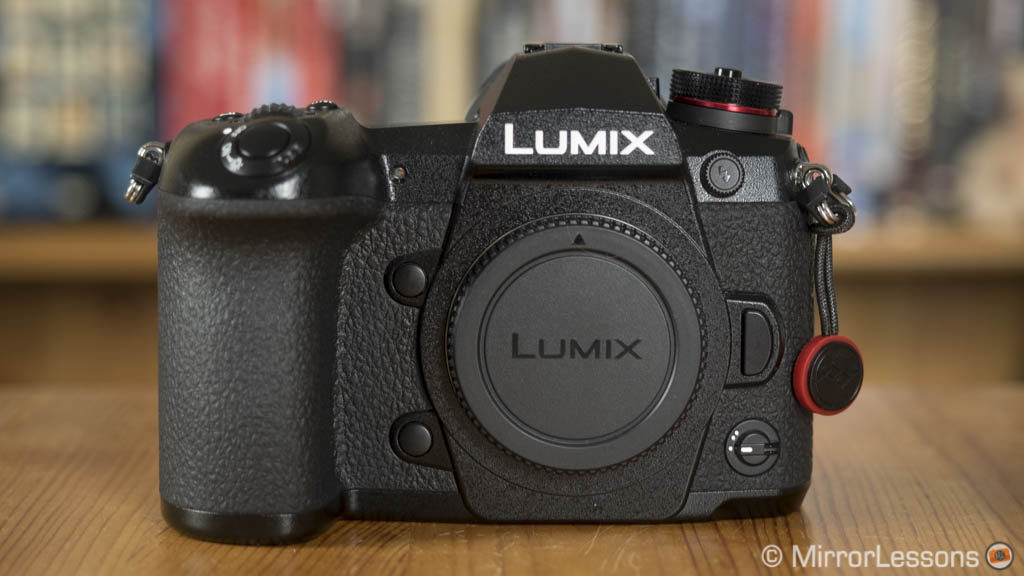
The G9 is an impressive achievement for Panasonic, above all because it shows that the company is capable of designing cameras for photographers (not that we ever doubted this to be honest). It packs lots of power and many features, but the way in which it truly excels is in its design. The G9 is extremely comfortable to hold and is precisely tailored for the most demanding shooting conditions.
The front grip is one of the most comfortable I’ve ever used. The camera is very well-built with full weather sealing and features an overwhelming layout of buttons, dials and customisation options. The top LCD screen is the cherry on top. Like the GH5, the menu system and touch screen operations surpass every other brand in terms of usability. The electronic viewfinder is probably the best yet and comes with three magnification options. Those like me who wear glasses are particularly grateful for this.
The G9 features many similar characteristics to its direct competitor the E-M1 II, including crazy continuous shooting speeds of 60fps and 20fps (with C-AF) when using the electronic shutter, although distortion is worse than on the Olympus.
Panasonic made excellent improvements to colours and the JPG engine, IBIS and Dual IS, and pushed its DfD autofocus system further. For specific genres like birds in flight though, it remains less efficient than its competitors.
Video is not as advanced as the GH5 but firmware 2.0 added 10-bit 4:2:2 internal recording (150Mbps). You get 4K up to 60p (10min max) and Full HD up to 180fps, with a lovely colour palette and enough settings to make the camera acceptable for serious work. It is one of the best advanced all-rounder products now available at a price that is hard to ignore. It is probably the best bang for the buck you can find (as of end of 2019).
Why the G9 is one of the best cameras for professional and advanced photographers:
- superb ergonomics and ease of use
- the largest viewfinder of all mirrorless cameras
- excellent autofocus, video capabilities and image stabilisation
- impressive speed and lots of extra features
- firmware 2.0 added lots of features and made it a baby GH5
To consider:
- autofocus can struggle with birds in flight
- the ergonomics are superb but the camera is not small
Check price of the Panasonic G9 on:
Amazon | Amazon UK | eBay | B&H Photo
Used Panasonic gear on MPB US | MPB UK
Fujifilm X-H1
APS-C – 26MP X-Trans IV – ISO 160-51200 – 10 bit 4K video – Hybrid AF – 30fps – Weather sealing – Dual SD slot
Main reason to get one: one of the most complete APS-C model
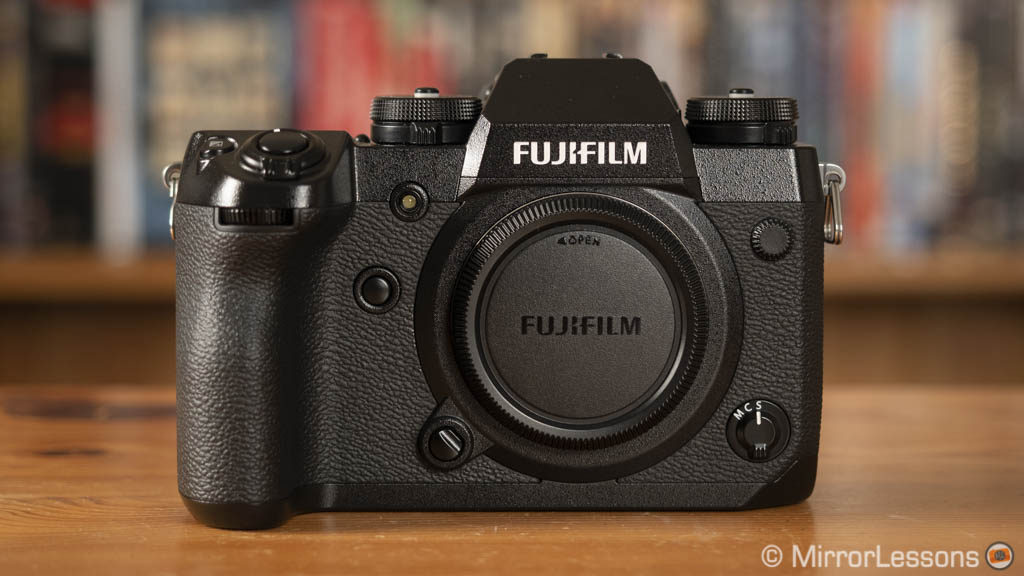
The X-H1 was launched at the wrong time. Despite its larger grip, improved video features and internal stabilisation (a first for Fuji), it was quickly superseded by the X-T3 which sported better specifications for a lower price, despite lacking the sensor shift technology. This is perhaps why the price of this camera has dropped so much. And that is a good thing, because it makes the X-H1 competitive again.
It features an excellent 24MP sensor, autofocus performance that will give you good results for sports and wildlife and fast continuous shooting speeds up to 11fps. It is the only model in the X-series APS-C line-up to feature 5-axis stabilisation, and for a first attempt, it delivers very good performance. Fujifilm has also fixed some of the issues in video mode via firmware.
It’s a shame that the larger grip doesn’t house a larger battery. It also doesn’t have the latest autofocus technology, meaning that face and eye detection in particular are not as reliable as the competition. It doesn’t have the 10-bit or 4K/60p capabilities of the X-T3 for video recording either, but you still get excellent quality thanks to Fuji’s film simulation modes (Eterna in particular).
Why the Fujifilm X-H1 is one of the best mirrorless camera bargains:
- Good ergonomics with a large grip that suits sports and wildlife shooting better the any other X-series
- Excellent image and video quality
- Good autofocus performance for a variety of situations
- 5-axis image stabilisation
To consider:
- battery life is not great
- face and eye detection can be unreliable at times
Check price of the Fujifilm X-H1 on:
Amazon | Amazon UK | B&H Photo | eBay
Used Fujifilm gear on MPB US | MPB UK
The Best Mirrorless Cameras for Professional and Advanced Photographers
Flagship models represent the very best companies have to offer, with innovative features and superior performance to accommodate the most demanding photographers. Whether you want the ultimate image quality, the fastest autofocus or the the best image stabilisation, you’ll be likely to choose one of the following.
Fujifilm GFX-50s
44x33mm Medium Format – 50MP – ISO 100-12800 – 1080p up to 30p – Contrast detection AF – 3fps – Weather sealing – Touch screen – Dual SD slot
Main reason to get one: image quality

If budget is not an issue and you want to get your hands on the best image quality a mirrorless camera can deliver, then look no further than the Fujifilm GFX-50s.
Its 50MP medium format sensor delivers outstanding dynamic range, good high ISO performance for its category and a stunning level of detail when combined with the excellent GF lenses. The colour profiles are once again proof of the talent of Fujifilm’s engineers when it comes to colour science.
The camera is well-built and easy to use as you would expect from Fuji. It has everything you need including a dual SD card slot and AF joystick.
Of course there are some limitations: the autofocus is quick and reactive as long as you use it in single mode but don’t expect great performance in continuous AF. The video settings are limited to Full HD with mediocre quality. But what really matters is the image quality and for that alone it’s worth every penny.
Why the Fujifilm GFX-50s is one of the best cameras for professional and advanced photographers:
- stunning dynamic range
- impressive sharpness coupled with the GF lenses
- beautiful and distinctive colour palette
- good high ISO performance for a medium format camera
- solid build and intuitive to use
To consider:
- continuous AF and video are not great
- well-priced on the medium format market, but still the most expensive on this list
Check price of the Fujifilm GFX-50s on:
Used Fujifilm gear on MPB US | MPB UK
Sony A7R IV
35mm – 61MP BSI – ISO 100-102400 – 4K up to 30p – 120fps in Full HD – 399 phase detection AF points – 10fps – 5 axis stabilisation – Dust and moisture resistant – 5.7M dots EVF – Touch screen – Dual SD slot
Main reason to get one: the best image quality without sacrificing performance
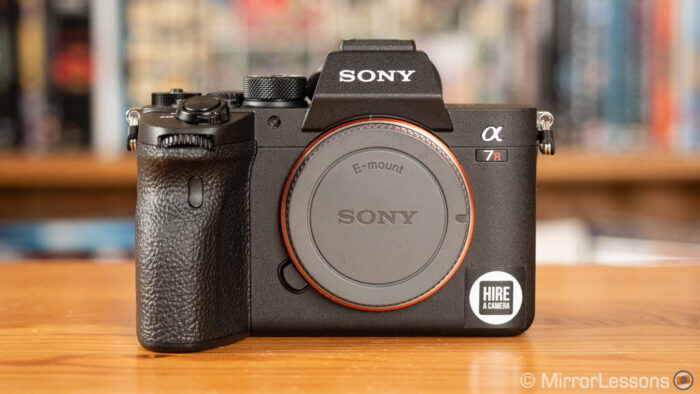
The fact that Sony makes the best sensors on the market is no longer big news, and the company has proved its worth once more with the A7R IV, the first full frame camera to sport 61MP. You get excellent dynamic range and more than acceptable high ISO performance up to 6400 despite the impressive number of pixels. And if 61MP are not enough, the Pixel Shift mode can raise the number to 280MP.
But the improvements made to the new model don’t stop here. Sony has upgraded the body design, noticeably by introducing a larger grip, and I’m pleased to say that the brand is finally on the right track concerning ergonomics. Battery life is excellent and there are two UHS-II card slots. The viewfinder sports a stunning 5.76M dot OLED panel whereas the rear monitor mostly remains limited to the AF settings.
Speaking of autofocus, the A7R IV features the latest software tweaks from Sony and it has impressive capabilities when it comes to C-AF, tracking and Eye AF, which is also available in video mode. Furthermore, continuous shooting works up to 10fps with decent buffer capabilities. There is 5-axis stabilisation on the sensor as well.
There is 4K video recording with surprisingly good results in full frame mode, but you’ll get better details and no aliasing when working in APS-C / Super35 mode. Skin tones have been improved considerably over previous cameras and there is no recording limitation.
The A7R IV is a product that can excel for every genre with the added benefit of its unique sensor. The price, while exceeding the $3K mark, is quite reasonable given what the camera can do. For those seeking the ultimate image quality in a small package without sacrificing speed and performance, there is no better choice.
Why the Sony A7R IV is one of the best cameras for professional and advanced photographers:
- highest resolution of any full frame camera
- improved ergonomics
- viewfinder with 5.76M dots
- a reference in the category for autofocus, tracking and Eye AF
- very good video quality with improved skin tones
- excellent battery life
To consider:
- The 280MP pixel shift mode didn’t impress me as much as I thought it would in terms of sharpness.
Check price of the Sony A7R IV on
Amazon | Amazon UK | B&H Photo | eBay
Used Sony gear on MPB US | MPB UK
Olympus OM-D E-M1X
Micro Four Thirds – 20MP – ISO 200-25600 – 18fps/60fps – 121 Cross-Type phase detection AF point – 5 axis stabilisation and Sync IS – 4K and Cinema 4K video – High Res Shot hand held – Weather sealing – Touch screen – Dual SD slot
Main reason to get one: true flagship design and build quality
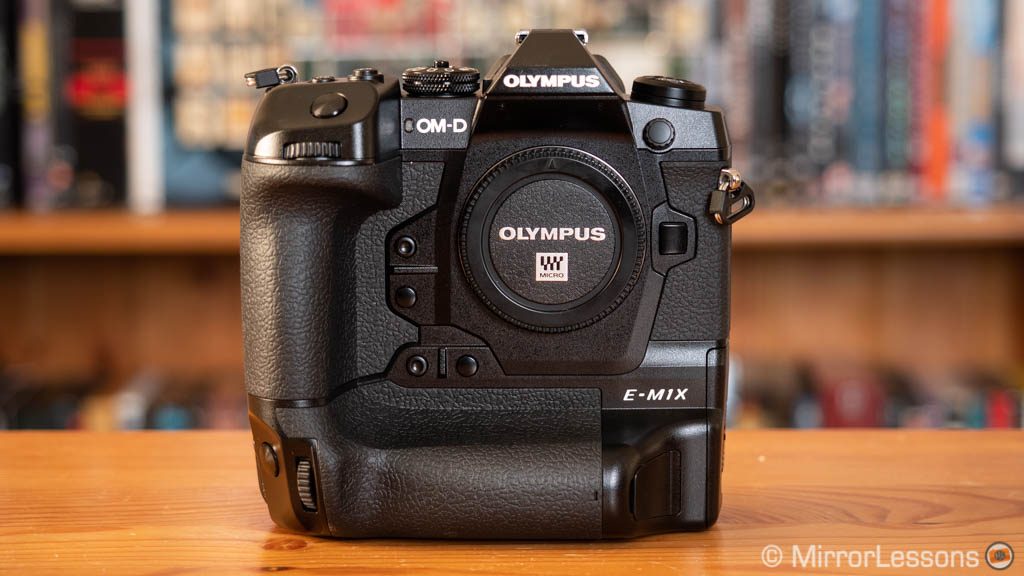
The E-M1X is the first mirrorless camera to adopt a design with a built-in vertical grip, and raises the bar high when it comes to build quality. With full weather-sealing, two batteries, two SD card slots and a plethora of customisable buttons, levers and joysticks, there is very little to complain about when it comes to ergonomics and usability. In fact it is one of the most comfortable mirrorless cameras I’ve used.
There are other reasons to like the flagship OM-D: the autofocus performance is greatly improved, the image stabilisation is in a class of its own and Olympus keeps pushing the boundaries of sensor shift technology by introducing the hand-held High Res Shot mode. You get very fast burst speeds, improved dynamic range, larger magnification in the EVF, built-in GPS and lots of extra features including Live ND and Live Composite.
The E-M1X is probably the most niche camera on this list: it aims at specific users and is the most expensive Micro Four Thirds camera to date. If you’re looking for great video specifications however, you will be disappointed, which is a shame given the stunning image stabilisation this model has.
Why the OM-D E-M1X is one of the best cameras for professional and advanced photographers:
- superior build quality
- excellent grip and ergonomics
- improved autofocus is on par with the very best
- unique features such as High Res Shot (80MP, or 50MP hand-held) and Live ND
- excellent battery life
To consider:
- large, heavy and expensive
- it targets specific users
- not a lot of improvements on the video side
- Olympus has recently announced its intention to sell its Imaging Business. We don’t know yet what this means for the future of its cameras, but we think it’s fair to mention it. You can read all about it in our dedicated article.
Check price of the Olympus OM-D E-M1X on:
Used Olympus gear on MPB US | MPB UK
Sony A9
35mm – 24MP – ISO 100-204800 – 20fps – 693 phase detection AF points – 4K video – 5-axis stabilisation – Dust and moisture resistant – Touch screen – Dual SD slot
Main reason to get one: autofocus performance
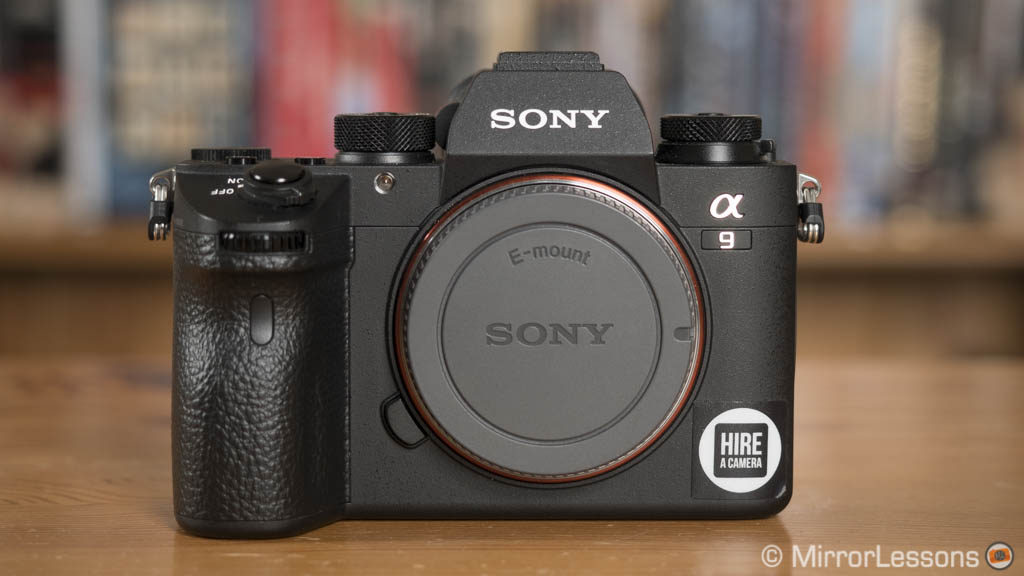
The Sony A9 is one of the most interesting examples of how far technology has come in the last few years. Not only can the autofocus rival the best DSLRs, but its unique stacked sensor allows it to do what no other cameras can: track a fast subject at 20fps with live view and no blackouts by using the electronic shutter with almost zero distortion. You need to try it for yourself to really appreciate it, and it’s probably a sneak peek at what future mirrorless cameras might become (see our in-depth article here).
The design and build quality are very similar to the A7 III and A7R III which means you get the same controls and customisation options. The 24MP sensor may not be as good as the 42MP BSI chip but it’s very close and offers a little extra at high sensitivities. Like the other A7 you can use adapted DSLR lenses with full automation (10fps max. however) and it has the same long-lasting battery life.
The only disappointment is the video capabilities: although you get excellent 4K quality, it is missing the picture profiles and Log gamma curve you find on other Sony cameras, which is a shame.
Why the A9 is one of the best cameras for professional and advanced photographers:
- the best autofocus performance of any mirrorless camera
- no other gives you real continuous live view with no blackouts
- same interface and level of personalisation as the A7 III and A7R III
- excellent battery life
To consider:
- no picture profiles for video limits advanced use
- the official retail price is rather high but you can find it for less
Check price of the Sony A9 on:
Amazon | Amazon UK | eBay | B&H Photo
Used Sony gear on MPB US | MPB UK
Olympus OM-D E-M1 II
Micro Four Thirds – 20MP – ISO 200-25600 – 18fps/60fps – 121 Cross-Type phase detection AF point – 5 axis stabilisation and Sync IS – 4K and Cinema 4K video – Weather sealing – Touch screen – Dual SD slot
Main reason to get one: image stabilisation
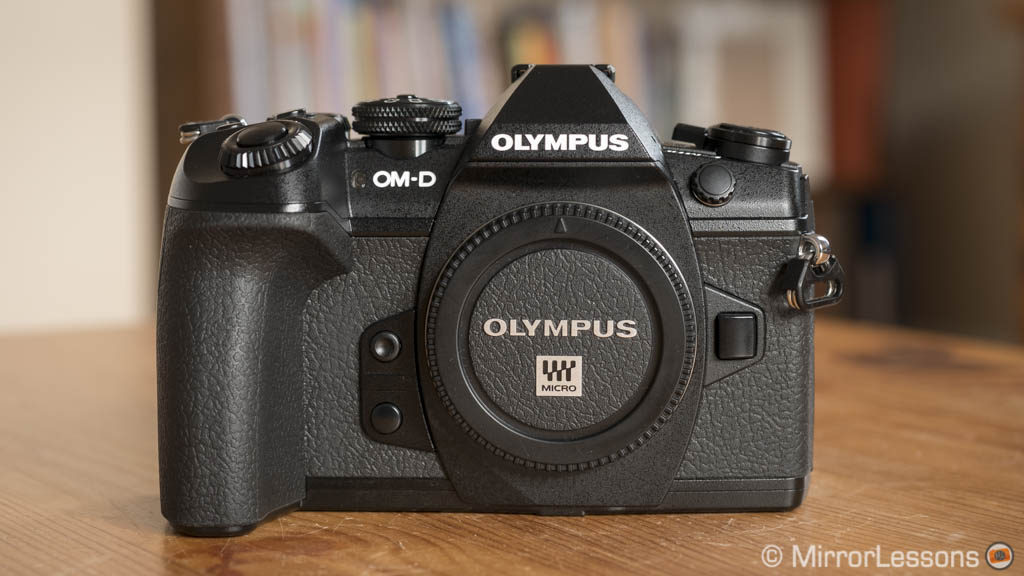
One of the best technical achievements we’ve seen in arc of mirrorless evolution is image stabilisation, and Olympus has done it better than anybody else. The more recent E-M1X may have the highest rating, but the E-M1 II is not far behind and in fact the differences I found are more subtle than what official specifications would lead us to believe.
The craziest speed I managed to achieve with this camera was a 20 second shot hand-held. I also brought back sharp images taken at around 10s and 8s. In the real world, you probably won’t need this level of unreal performance – also because the keeper rate is low – but it means that the camera will never let you down for everyday hand-held shooting. Coupled with the 12-100mm Pro and Sync IS (sensor+optical stabilisation working together), you get a stunning combo for hand-held work. The system has proven impressive even at extreme focal lengths such as 300mm.
There are plenty of other things to like about the E-M1 II: good image quality and impressive continuous shooting speeds up to 60fps are just a couple. The autofocus performance is not the best in the category but has been improved via firmware. The video capabilities are fine but not the best. Still, you get the 4K and Cinema 4K formats and the image stabilisation is top-notch for video too. The battery life is one of the best in the category and is a significant step forward compared to all other OM-D cameras. Another thing I appreciated about the E-M1 II is that Olympus managed to make the body comfortable to hold without making it as large as a Lumix G9 or GH5.
Why the OM-D E-M1 II is one of the best cameras for professional and advanced photographers:
- the most impressive image stabilisation system I’ve ever tested
- autofocus enhanced via firmware
- stunning continuous shooting speeds
- comes with lots of extra features
- dimensions are compact but the grip remains very comfortable
- excellent battery life
To consider:
- video is not as good as the competition
- Olympus has recently announced its intention to sell its Imaging Business. We don’t know yet what this means for the future of its cameras, but we think it’s fair to mention it. You can read all about it in our dedicated article.
Check price of the Olympus OM-D E-M1 II on:
Amazon | Amazon UK | eBay | B&H Photo
Used Olympus gear on MPB US | MPB UK
Nikon Z6
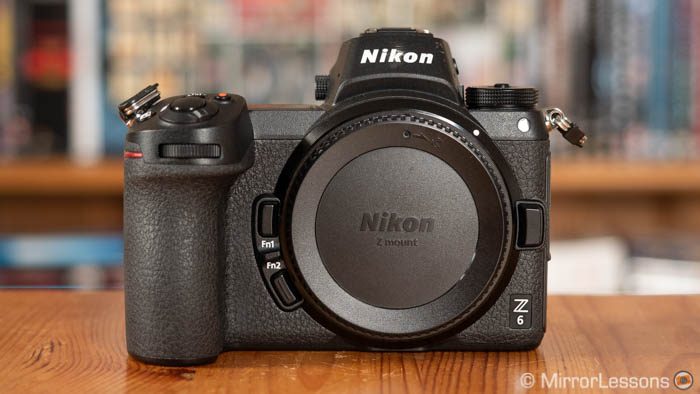
35mm – 24MP BSI – ISO 100-204800 – 12fps – 273 phase detection AF points – 5 axis stabilisation – 4K video – Weather sealing – Touch screen
Main reason to get one: design and ergonomics
The Nikon Z6 may lack a few things that its direct competitor the A7 III has, but it has won my heart for other reasons that I consider equally important.
The design is lovely because it remains compact yet provides a comfortable grip, an intuitive button layout, a very good viewfinder and a complete touch screen interface. It is very well built and enjoyable to use, which is why I prefer it to the Sony E-mount model.
But it is not just a question of ergonomics. The image quality is excellent and on par with its rival. The in-body stabilisation works well. The autofocus performance passed the test with flying colours for sports and wildlife, thanks in part to Nikon having improved the performance via firmware while also adding the Eye AF function. The latter is not as reactive as the Sony version, but good enough to be trusted in different portrait scenarios.
The Z6 delivers nice colours when recording 4K video, and can shoot up to 120fps in Full HD. You need an external recorder to take advantage of the N-Log profile however (it comes in 10-bit) and the high ISO performance displays a bit more noise than I would like. Nikon has also promised to enable RAW via HDMI with a future firmware update.
The buffer isn’t great and this is linked to one of the most controversial characteristics: the single memory card slot that only accepts the more expensive XQD type. Not having two slots isn’t a deal breaker for me, so I’ve made peace with that, but of course I can understand it being problematic for other photographers.
As you can imagine, the number of native lenses available for the Z-mount is limited for now, which is understandable given that the system is relatively new. The lenses I’ve tested so far are really good, albeit on the expensive side if we look at the price of products such as the 1.8 primes. There is also the FTZ adapter which works very well with all F-mount lenses. I hope that third-party manufacturers will join the system at some point, especially now that that they are making lenses specifically designed for mirrorless (Tamron, Sigma, Samyang). That would be really helpful.
So overall I acknowledge, from an objective point of view, that the Z6 is inferior to its direct competitor, but it is the camera I enjoy using the most right now.
Why the Nikon Z6 is one of the best cameras for professional and advanced photographers:
- superb design and ergonomics
- excellent image quality
- fast autofocus and reliable Eye AF
- good 5-axis stabilisation system
- good video quality
To consider:
- limited range of native lenses for now
- only one memory card slot
Check price of the Nikon Z6 on:
Amazon | Amazon UK | B&H Photo | eBay
Honourable mentions and additional reads
I believe that building this kind of article is all about making a real selection rather than listing everything available on the market. This means that some models are inevitably left out.
Canon EOS R
The main strength of Canon’s first full-frame mirrorless camera is its design and ease of use, which are among the best I’ve tested. It’s a shame that the lack of an AF joystick and dual card slot prevent it from being perfect. When it comes to the sensor and performance, the gap between it and other 35mm format cameras (Sony in particular) is difficult to ignore. Despite the excellent Dual Pixel CMOS AF system, the more limited dynamic range and high ISO performance, slower burst speeds, and heavy sensor crop when recording in 4K put the EOS R at a clear disadvantage.
Fujifilm X-H1
When analysed within the Fuji eco-system, the X-H1 makes sense. Its larger design improves comfort with the heaviest XF lenses while the addition of 5-axis stabilisation and good video capabilities give Fuji X users more features than ever before. If you take into account the competition though, you realise that the X-H1 doesn’t offer anything that we’ve haven’t already seen elsewhere and Fuji missed the opportunity to offer a better battery life. Also, now that the X-T3 is out, it makes for even tougher competition thanks to its superior video capabilities and improved autofocus.
Fujifilm GFX 50R
The second mirrorless medium format camera from Fujifilm retains the same sensor and performance as the 50s but comes at a lower price with a rangefinder design. It’s another step towards making medium format more competitively priced. We held one briefly at Photokina but we haven’t fully tested it yet.
Fujifilm GX100
The flagship medium format camera from Fujifilm is the most expensive camera in this list, but in that particular market it is actually very well priced considering what it offers. In addition to the 100MP sensor, it can record 4K video, has phase detection autofocus and 5-axis image stabilisation, all technologies that are not common in the medium format segment. It’s niche and we haven’t tested it, but it’s quite a unique camera.
Hasselblad X1D II
The X1D II is a mirrorless medium format camera and is based on the same 50MP sensor found inside the GFX. It is smaller with a lovely modern design and you start to find it at a more interesting price than before. We encounter the first version at Photokina two years ago and we were impressed by the compact design. The mark II model is faster and with more resolution on the viewfinder and rear LCD. Unfortunately we haven’t had the chance to test it yet.
Leica SL2
There is no doubt that Leica is capable of delivering outstanding quality thanks to its lenses and beautiful colour reproduction. The SL2 receives nice upgrades such as an improved design, a 5.7M dot EVF, the 47MP sensor of the Panasonic S1R, 5-axis stabilisation and an impressive set of specifications for video users. Build quality should be top notch as usual. It remains contrast detection AF though and that might be a limitation in certain situations. It is expensive, as are the lenses, but thanks to the L-mount alliance, you can now access more affordable products from Sigma and Panasonic. Quite an innovation in Leica terms if you think about it.
Nikon Z7
The Nikon Z7 is equally good to the Z6 when it comes to ergonomics, viewfinder, touch screen and ease of use. The autofocus is fast and accurate, the image quality is excellent and the 5-axis stabilisation a pleasant surprise considering it is a first for Nikon. So why isn’t the Z7 on the main list, you may wonder? Well, because the full-frame mirrorless market has become very competitive these days, and I feel that the A7R III, although inferior when it comes to ergonomics, has the upper hand in other areas (full comparison available here).
Sony A7R III
I’d planned to put the A7R III in the Best Camera for the Money section but its price seems to have gone up again. However, it you find it for around $2k, it is a great deal to consider. The camera has one of the very best sensor on the market (42MP), good autofocus, excellent video quality, 5-axis stabilisation and more!
Panasonic S1R
The Lumix S1R is Panasonic’s first full-frame mirrorless camera (along with the S1). It has 47MP, a large weather-sealed body, a superb 5.36M dots viewfinder, excellent 5-axis stabilisation (better than Sony and Nikon), and a surprising high resolution shot mode that effectively suppressed movements inside your frame. Once again though, the A7R III feels better rounded thanks to the faster autofocus and burst speed, video performance and more affordable price.
Additional reads:
- Sony A7 III vs A7R III – The complete comparison
- Sony A7R III vs A7R IV – The complete comparison
- Sony A7R III vs Fujifilm GFX-50s – Image quality comparison
- Sony A9 vs A7R III – Five key aspects analysed
- Nikon Z6 vs Sony A7 III – The complete comparison
- Nikon Z7 vs Sony A7R III – The complete comparison
- Canon EOS R vs Sony A7 III – The complete comparison
- Panasonic G9 vs Olympus OM-D E-M1 II – The complete comparison
- Olympus OM-D E-M1X vs E-M1 II – The complete comparison
The Best Mirrorless Cameras for Enthusiasts and Amateur Photographers
We’ve seen the very best cameras in terms of performance and design, but unsurprisingly they are all on the expensive side. What if you want good performance in a more affordable package?
Well, the good news is that there is a lot of choice on the entry/mid level market too. Here are the best “bang for the buck” mirrorless cameras you can buy.
Sony A7 II
35mm – 24MP – ISO 100-25600 – 1080p up to 60p – 117 phase detection AF points – 5fps – 5 axis stabilisation – dust and moisture resistant
Main reason to get one: full frame under $1400
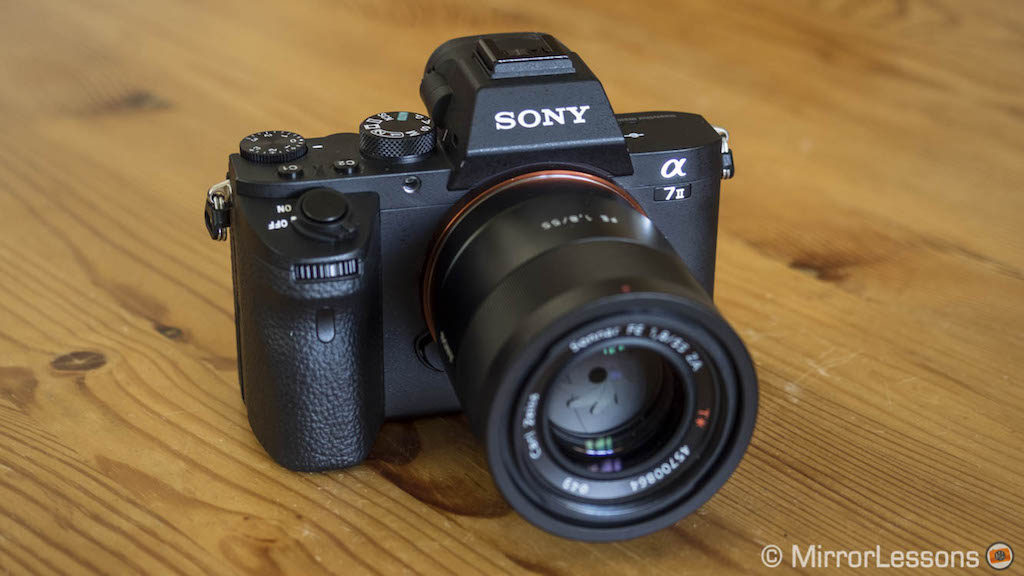
Sony tends to keep its older models on the market for a long time and the advantage is a drop in price. The more than three years old A7 II can now be found for less than fourteen hundred dollars, or even less with special discounts.
It doesn’t have outstanding video capabilities nor does it have the same autofocus performance as the most recent E-mount cameras, but the 24MP sensor does give you excellent image quality when it comes to dynamic range and low light up to 6400 ISO. It is the first Sony camera to feature five axis stabilisation and remains on par with the most recent A7 models, except for video where jittering is more present. Burst shooting is limited to 5fps and the buffer fills up very quickly.
The A7 II features on-sensor phase phase detection points and can be used with adapted DSLR lenses. Of course like all mirrorless cameras you can mount other types of 35mm lenses, with the advantage of keeping the native angle of view. The viewfinder is good but there is no touch sensitivity on the rear monitor and the menu system is confusing. The battery life is not great, albeit not as bad as other more powerful Sony cameras.
Why the Sony A7 II is one of the best cameras for enthusiasts and amateurs:
- 35mm format at an attractive price
- excellent image quality
- 5 axis stabilisation
- autofocus can work with adapted lenses
To consider:
- 1080p video is average
- weak performance when it comes to speed and buffer
Check price of the Sony A7 II on:
Amazon | Amazon UK | eBay | B&H Photo
Used Sony gear on MPB US | MPB UK
Fujifilm X-T30
APS-C – 26MP X-Trans IV – ISO 160-51200 – 4K 30p – Hybrid AF – 30fps – Touch screen
Main reason to get one: compactness

It is difficult to go wrong with the X-T30. We had the chance to see a pre-production model at the press event and our good impression was confirmed once we tested it and compared it to the a6400.
First, it houses the same sensor and image processor as the X-T3 which we know very well. You get excellent dynamic range, good high ISO performance and lovely colour profiles. Then we have the 4K video quality and once again, it is the same as the X-T3 minus 10-bit internal recording. There is F-Log, the Eterna profile, DR and NR settings and a clean 10-bit 4:2:2 signal via HDMI.
But that’s not all: the autofocus of the X-T30 has received additional tweaking, making it the most advanced version to date from Fuji along with that of the X-T3, and it has a more reactive touch screen. It can shoot up to 20fps, or 30fps with a 1.25x crop using the electronic shutter, which gives you live view and no blackouts. But what I like the most about the camera is that it is very compact and lightweight.
The few complaints I have concern the ergonomics, which is a bit unusual when it comes to Fujifilm camera. If you have large hands like I do, you may find the lack of a larger front grip annoying. You’ll press the Q button on the rear inadvertently every two seconds because of its bad location which can become very frustrating. On the bright side, the camera is very small and lightweight and I’m sure many of you will appreciate the compact form factor.
Why the Fujifilm X-T30 is one of the best camera for enthusiasts and amateurs:
- same image quality and AF performance as the X-T3
- excellent video capabilities
- up to 20fps or 30fps (1.25x crop) with live view and no blackouts
- compact and very light
To consider:
- no sensor stabilisation
- ergonomics is not perfect
- video recording is limited to 10min/clip in 4K, 15min in Full HD
Check price of the Fujifilm X-T30 on:
Amazon | Amazon UK | B&H Photo
Used Fujifilm gear on MPB US | MPB UK
Sony a6400
APS-C – 24MP – ISO 100-102400 – 4K video – 425 phase detection points – 11fps – dust and moisture resistant
Main reason to get one: autofocus
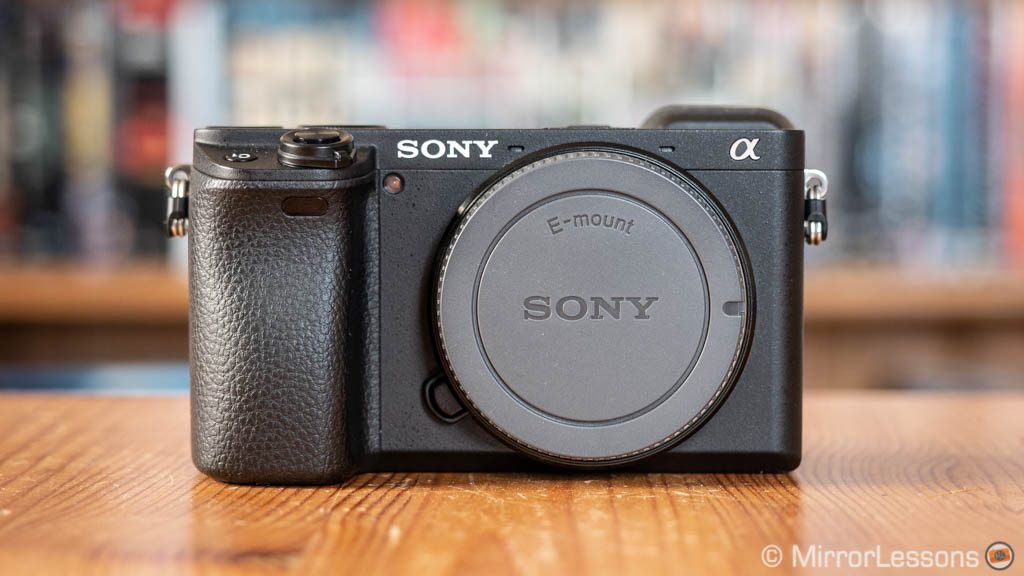
Sony hasn’t changed much about the design of the recently released a6400. In fact it looks identical to the a6300 – which also means it’s not the most straightforward camera to use. The only real difference is the rear touch LCD screen that can now tilt up 180˚.
What impressed me most about this compact APS-C camera is the autofocus system. In terms of the keeper rate, there isn’t a huge difference compared to its siblings the a6300 and a6500, but it’s the way in which the AF system works that makes a difference.
Except for specific situations, you can leave the focus area relatively large (Zone or Wide) knowing that the camera always understand what and where the subject is. The new real time tracking mode is the best I’ve tested to date, all mirrorless cameras considered. The speed and precision with which the camera keeps the AF area glued to the subject is outstanding. It doesn’t matter how fast or how close to the edge it goes, the camera rarely loses track of it.
Eye detection now allows you to prioritise the left or right eye, and also works in real time. EyeAF for animals is really good too, so it’s safe to say that you won’t find anything like this camera when it comes to autofocus performance at this price.
Everything else is similar to the other two E-mount cameras, which is not a negative thing by any means. The 24MP sensor delivers excellent image quality for stills and video with good dynamic range and performance up to 12800 ISO. You can record 4K up to 30p with no recording limit, making it the first camera in this category to do so. In 1080p you can work up to 120fps but it’s a shame that the quality in Full HD is more disappointing due to lots of aliasing.
One thing to keep in mind is that the Sony APS-C lens catalogue is not as varied as the full frame one. You can adapt DSLR lenses and retain excellent performance thanks to the on-sensor phase detection, but the small size of the camera compromises the handling. The battery life is not great so add some spares to the shopping list.
Why the Sony a6400 is one of the best cameras for enthusiasts and amateurs:
- stunning autofocus system and tracking
- very reliable face and eye detection, with Eye AF for animals coming soon
- high quality 4K and unlimited recording in video mode
- compact dimensions yet the grip is good
To consider:
- not the most intuitive camera to use, but there is lots of room for customisation
- poor battery life
- the a6500 costs a bit more but has a better buffer and in-body stabilisation
Check price of the Sony a6400 on
Amazon | Amazon UK | B&H Photo | eBay
Second-hand Sony cameras on
Olympus OM-D E-M5 III
Micro Four Thirds – 20MP – ISO 100-25600 – Phase detection AF – 4K up to 30p – 5 axis stabilisation – 30fps – Weather sealing – Touch screen
Main reason to get one: image stabilisation
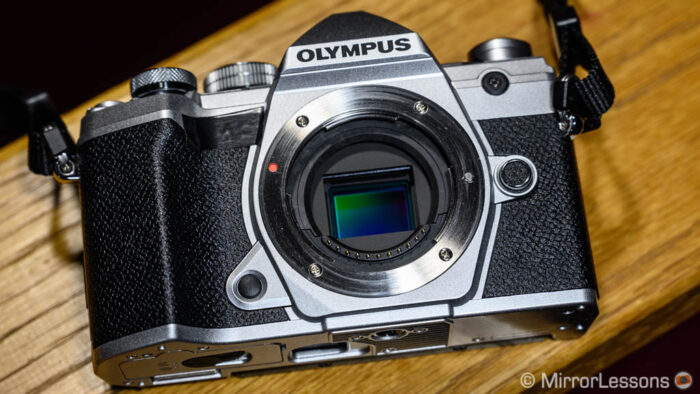
The long awaited successor to the popular E-M5 II doesn’t bring any substantial evolution to the series, but rather catches up with the competitors in some key areas.
The first upgrade might sound a bit odd because Olympus chose polycarbonate (plastic) over metal for most of the build. That being said, full weather sealing is still guaranteed just like its predecessor.
We finally have phase detection autofocus, which is taken from the flagship E-M1X. In our experience, it is reliable in continuous AF mode for stills and video. Burst shooting is raised to 10fps, or 30fps with the mechanical shutter, although if you’re in focus priority, these speeds decrease to 6fps and 10fps respectively. There is also the Capture Pro mode first seen on the E-M1 II and E-M1X.
Not a lot has changed sensor wise: it is the same 20.4MP chip found on the E-M1 II and E-M1X. On the video side, you get 4K video up to 30fps, and Cinema 4K (DCI) at 24fps. There is a Flat profile but unfortunately there is no real Log gamma curve. That being said, if we consider the mic input, the multi-angle touch LCD screen and the best image stabilisation on the market for stills and video, the E-M5 III is certainly an appealing option in the mid-range category.
Why the OM-D E-M5 III is one of the best cameras for enthusiasts and amateurs:
- the best image stabilisation tech on the market
- phase detection AF gives better performance in C-AF and for video
- plenty of extra features including the 80MP high res mode
To consider:
- small batteries so you might want to get a few spares (but there is USB charging)
- for a bit more money you can get the E-M1 II which has better
- ergonomics, 2 SD card slots and faster burst speeds
Check price of the Olympus OM-D E-M5 III on:
Amazon | Amazon UK | eBay | B&H Photo
Used Olympus gear on MPB US | MPB UK
Canon EOS M5
APS-C – 24MP – ISO 100-25600 – Dual Pixel CMOS AF – 1080p up to 60p – 9fps – Touch screen
Main reason to get one: ease of use
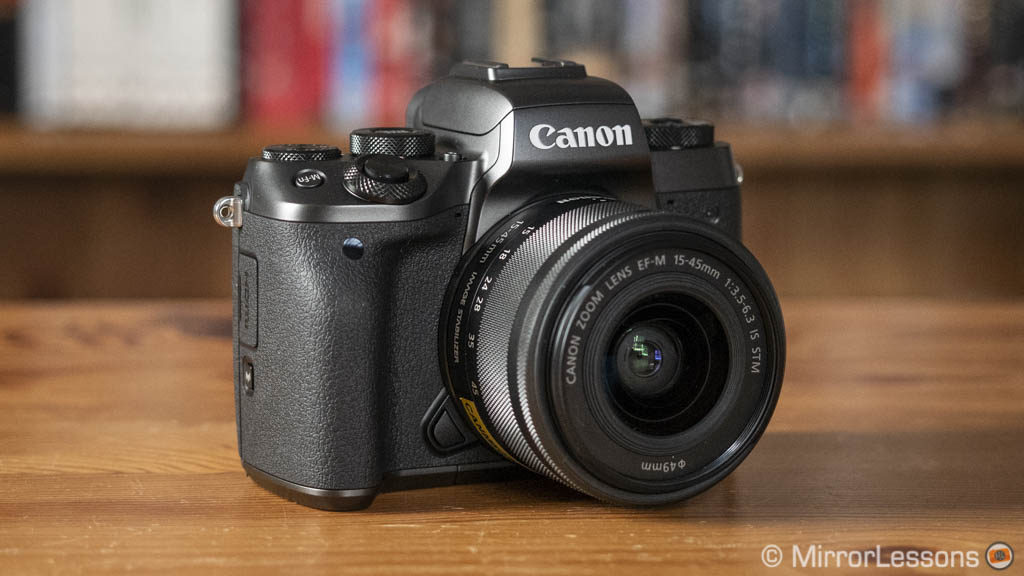
We never gave the EOS M series a fair chance up until recently, partly because Canon hasn’t yet shown much interest in releasing a more serious mirrorless model. I’m glad we changed our minds though because the M5 is far from a bad camera.
Straight out of the box, you realise how well it is designed. Despite being small and compact, it feels really nice in the hand and the grip is extremely comfortable. All the controls are spaced out nicely with a great tactile feel and sit within easy reach of your fingers. There is also a good EVF, handy touch screen capabilities, good image quality and an excellent hybrid autofocus system (Canon’s renowned Dual Pixel CMOS AF).
Using the M5 makes you realise how much potential Canon has. The brand definitely knows how to design a camera, and harbours some very interesting technology but as of now, the lens catalogue is poor and we’d like to see many more video related features. But we enjoyed using it, and have no problem recommending it if you are just looking for a compact model to use as a hobby camera and aren’t particularly interested in building a more complete set-up.
Why the EOS M5 is one of the best cameras for enthusiast and amateurs:
- extremely comfortable design
- very straightforward menu and button/dial layout
- good viewfinder and touch sensitivity on the rear LCD
- excellent autofocus system
To consider:
- video quality is good in 1080p but there is no 4K
- limited selection of native lenses
Check price of the Canon Eos M5 on:
Amazon | Amazon UK | eBay | B&H Photo
Used Canon gear on MPB US | MPB UK
Panasonic G85 / G80
Micro Four Thirds – 16MP – ISO 100-25600 – DfD autofocus – 4K video – 5 axis stabilisation and Dual IS – 9fps – Weather sealing – Touch screen
Main reason to get one: versatility
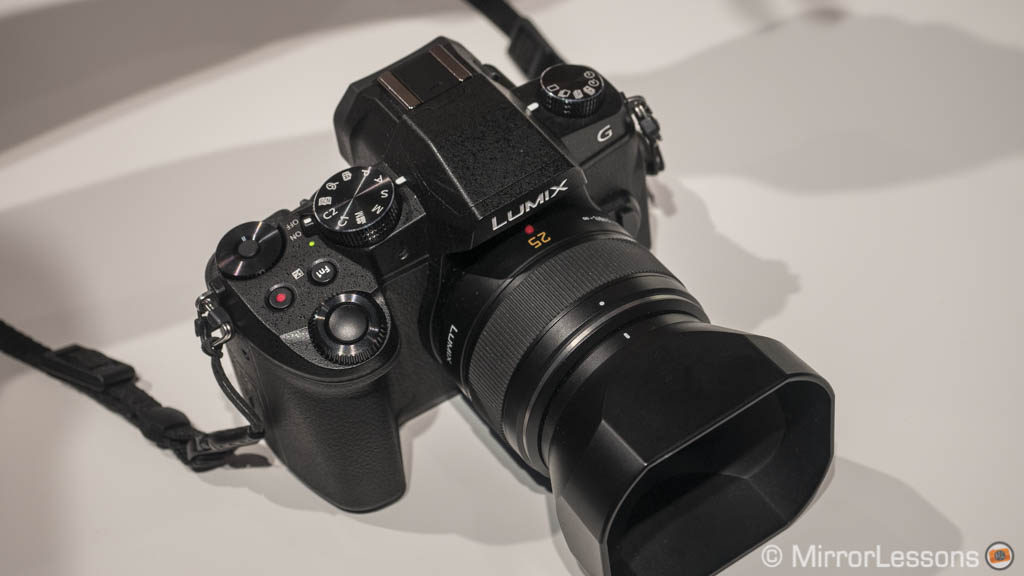
The G85 (also known as the G80 in Europe) offers an impressive package for a very reasonable price. You get great grip and ergonomics, good battery life, weather sealing, lots of physical controls, a mic input and headphone output. If you’re looking for an affordable all-rounder for stills and video, this is probably the best choice as of now.
The 16MP sensor is the same found inside the GX85. It lacks the AA filter in order to provide extra sharpness but moiré can be visible at times. The 4K capabilities are excellent with extra settings such as the Cine-Like profiles. The viewfinder is good and the multi-angle touchscreen is really useful.
The autofocus is not the best with fast moving subjects, especially in video mode, but like most Panasonic cameras you get lots of extra features including 4K Photo and a good 5-axis stabilisation system that is compatible with Dual IS (sensor and lens stabilisation working at the same time). The latter minimises jittering when recording video hand-held, which had been a negative characteristic of many Lumix OIS lenses previously.
Why the G85 is one of the best cameras for enthusiasts and amateurs:
- better ergonomics and ease of use
- good 4K video quality
- 5-axis stabilisation and Dual IS
- has everything you need for video including mic input and headphone output
To consider:
- the autofocus is not the most accurate in continuous mode with fast subjects
- the camera has different names depending on the country (G80 in Europe)
- The G95 (G90) is out and has a few updates including the 20MP sensor, V-Log L profile and unlimited recording in video mode
Check price of the Panasonic G85 / G80 on:
Amazon | Amazon UK | eBay | B&H Photo
Used Panasonic gear on MPB US | MPB UK
Honourable mentions:
The most recent cameras are not always the ones worth recommending which is why we discarded a few models above. Of course the latest additions bring interesting updates to the table if you want to consider them.
Canon EOS M50
The recent M50 has more features than the flagship M5 – including 4K video – and comes at a lower pice. We haven’t tested it yet.
Canon EOS RP
We love the comfortable design of the RP and how easy it is to use it. The autofocus is good and the colour rendering is really nice. Much like the EOS R though, we struggle to recommend it over the competition. Dynamic range is poor and 4K video is limited by a huge 1.75x crop. The RP has an attractive price for a full frame camera ($1300) but that’s just the body. If you include the only native kit lens available as of now, the prices goes beyond $2K. For much less than that, there is an A7 II with the kit lens waiting.
Fujifilm X-E3
The X-E3 is in essence an X-T20 with a rangefinder-like design. Its EVF is on the left which makes the camera shorter than the X-T20. There is also a handy AF joystick and touch sensitivity, but the screen is fixed and this is why we prefer the X-T20. But if you like the X-E3 design best, know that is has the same technology inside as the X-T2/X-Pro2.
Olympus OM-D E-M10 III
The most recent OM-D adds 4K video and a more user-friendly interface. It is not as solid as the E-M5 II, lacks some advanced features but is less expensive. However the camera misses top and bottom metal plates that its predecessor the E-M10 II has, as well as useful options like using the silent shutter in manual mode. Since the sensor and autofocus remain the same, we would recommend the E-M10 II instead, also because it can be found for less money. We talk about it in part II.
Panasonic GX9
The GX9 is a worthy upgrade over the GX85 if you care about details: it has a few extra megapixels, the latest Lumix colour science which is a subtle yet nice improvement, the tilting EVF first introduced on the GX7, as well as some additional tweaks here and there. Video shooters will appreciate the faster autofocus and Cine-Like profiles. That being said, the predecessor GX85 can be found for a more appealing price, and we think it’s the better deal overall (we talk about it in Part II).
Sony A6100
The entry level model in the APS-C series, and successor to the best selling A6000, is very similar to the A6400 including the price. So for now, we say go with the latter.
Sony a6500
The a6500 has 5-axis stabilisation, a touch screen and better buffer capabilities. However in our tests it didn’t feel worth the extra money in comparison to the a6300, and now that the a6400 is out, we feel that the latter is the best bang for the money. In some countries the gap in price has started to decrease, so the a6500 may be the better option in that case. But if the difference in cost remains high where you live, we recommend saving some money by going for the a6400.
Sony A6600
The most advanced APS-C camera from Sony has an improved battery life (the same unit as the A7 III series), a larger grip and a 180˚ tilting screen. It features the latest AF tech which means it has one of the best systems on the market (including real time tracking and Eye AF for animals). For video, there are the usual high end 4K and 1080p specifications but now with unlimited recording. We haven’t tried it yet.
Additional reads
- Sony a6400 vs Fuji X-T30 – Five key aspects analysed
- Fujifilm X-T2 vs X-T3 – The complete comparison
- Fujifilm X-E3 vs X-T20 – The complete comparison
- Sony a6300 vs a6500 – The complete comparison
- Sony a6500 vs Fujifilm X-T2 – The complete comparison
This article continues in Part II
You may also like:



